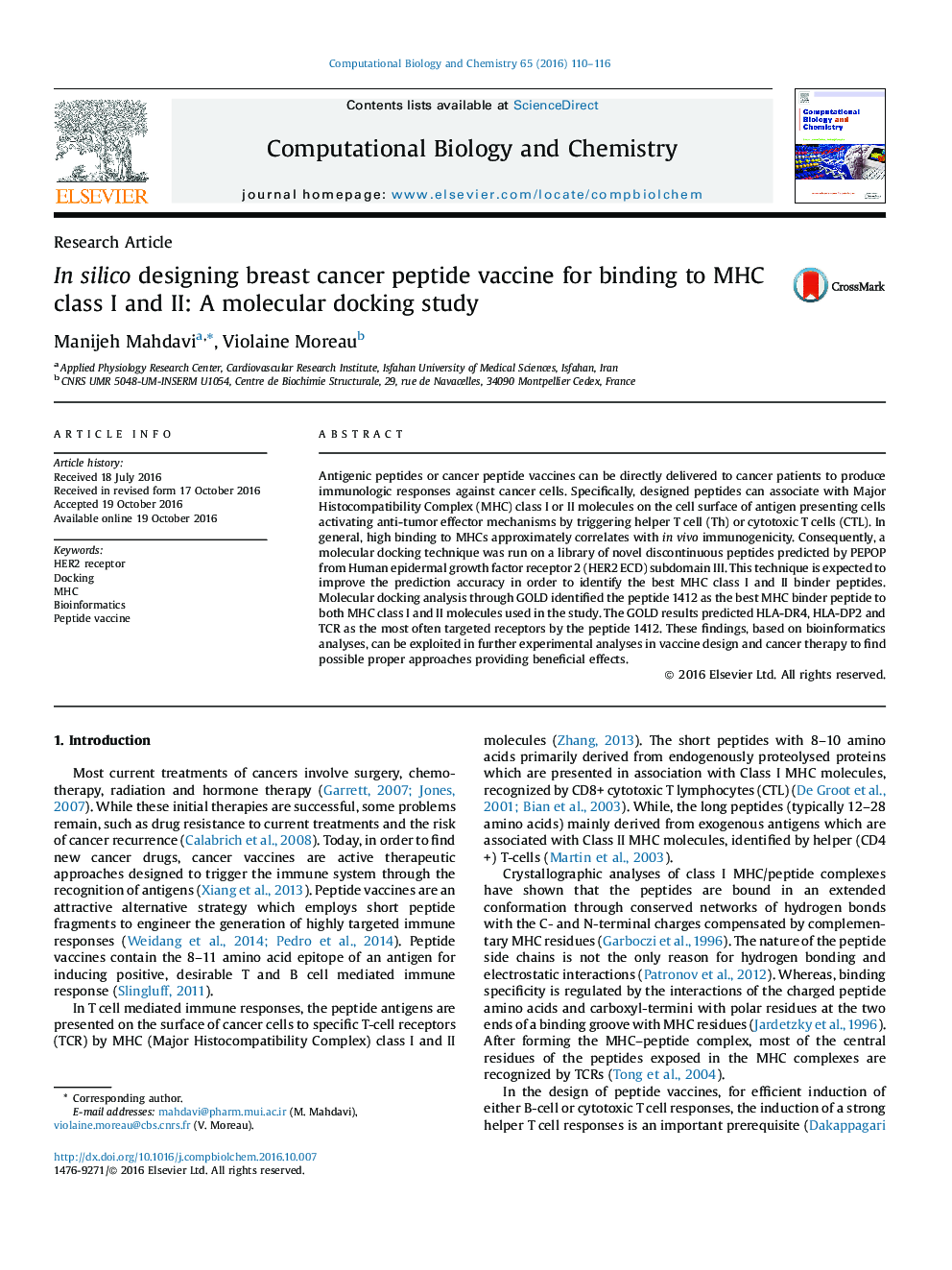| کد مقاله | کد نشریه | سال انتشار | مقاله انگلیسی | نسخه تمام متن |
|---|---|---|---|---|
| 6451269 | 1416282 | 2016 | 7 صفحه PDF | دانلود رایگان |

- Novel method of evaluating the affinity of candidate peptides to MHCs is proposed.
- The peptide 1412 identified as the best MHC binder to the most of applied MHCs.
- These findings can be exploited in vaccine design and cancer therapy.
Antigenic peptides or cancer peptide vaccines can be directly delivered to cancer patients to produce immunologic responses against cancer cells. Specifically, designed peptides can associate with Major Histocompatibility Complex (MHC) class I or II molecules on the cell surface of antigen presenting cells activating anti-tumor effector mechanisms by triggering helper T cell (Th) or cytotoxic T cells (CTL). In general, high binding to MHCs approximately correlates with in vivo immunogenicity. Consequently, a molecular docking technique was run on a library of novel discontinuous peptides predicted by PEPOP from Human epidermal growth factor receptor 2 (HER2 ECD) subdomain III. This technique is expected to improve the prediction accuracy in order to identify the best MHC class I and II binder peptides. Molecular docking analysis through GOLD identified the peptide 1412 as the best MHC binder peptide to both MHC class I and II molecules used in the study. The GOLD results predicted HLA-DR4, HLA-DP2 and TCR as the most often targeted receptors by the peptide 1412. These findings, based on bioinformatics analyses, can be exploited in further experimental analyses in vaccine design and cancer therapy to find possible proper approaches providing beneficial effects.
101
Journal: Computational Biology and Chemistry - Volume 65, December 2016, Pages 110-116